
The Memorial Museum-Lyceum is located in the historical wing of the Catherine Palace, which previously housed the Tsarskoye Selo Lyceum in Tsarskoye Selo (now the city of Pushkin in St. Petersburg).
The museum is located in a four-story wing connected by an arch to a covered corridor with the church building Catherine's Palace. In the church building is the palace Church of the Resurrection of Christ.
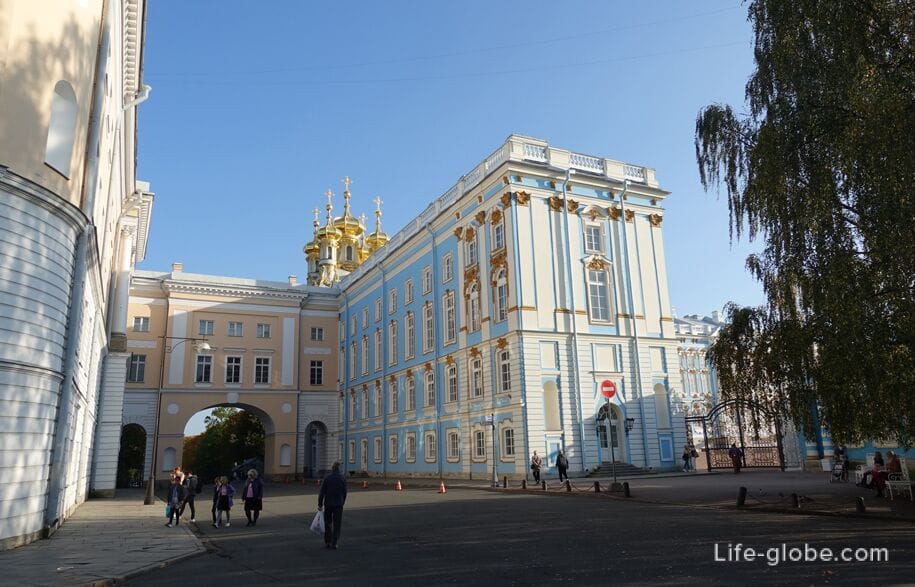
The wing was built in the 1790s for the grand duchesses-daughters of Emperor Paul I.
Since 1810, by the decree of Emperor Alexander I, the Imperial Tsarskoye Selo Lyceum was founded, which it was decided to place in the northern building of the palace. For these purposes - adaptation to the needs of the educational institution, the building was rebuilt by the architect Vasily Petrovich Stasov.
The Imperial Lyceum was intended for the education of noble children. The lyceum was opened in 1811.
The lyceum accepted children aged 10-14 years; admission was carried out every three years. A distinctive feature of the Tsarskoye Selo Lyceum was the prohibition of corporal punishment of pupils, enshrined in the lyceum charter.
Training at the lyceum lasted six years, divided into two courses, 3 years each. Primary-gymnasium, with the study of high school subjects. The final one is university, which includes the main subjects of the three faculties of the university: verbal, moral and political, and physical and mathematical. Lyceum students chose civil or military service and graduated depending on their academic performance with ranks from the 14th to the 9th grades, in accordance with the Table of Ranks.
The first floor of the lyceum building housed the economic department, the apartments of the inspector, tutors and other employees at the Lyceum. On the second floor there was a dining room, a hospital with a pharmacy, a conference room and an office. On the fourth floor there are the pupils ' bedrooms. The third floor was a classroom, with classrooms, a library, and a large hall.
From 1811 to 1817, Alexander Pushkin was educated at the lyceum.
The first Lyceum graduation, later called Pushkin's, was the most brilliant.
The lyceum operated within the walls of the former palace wing until 1843, when the school was transferred to St. Petersburg.
In 1949, the memorial museum-lyceum was opened in the building of the former Imperial Tsarskoye Selo Lyceum, which still exists today.

The museum recreates the environment in which the Lyceum students of the first class lived and studied.
On the basis of archival materials, a Large Hall, a newspaper room, a Library, classrooms, some of the students ' bedrooms, as well as the apartment of the tutor and art teacher S. G. Chirikov were restored.
InIn the Large Hall, the students spent their leisure hours, engaged in dancing, fencing, and staged performances. On solemn occasions, a table covered with red cloth with a gold fringe was brought into the hall, on which was placed - "A certificate granted to the Imperial Tsarskoye Selo Lyceum by Emperor Alexander I". Today, the diploma also takes its place in the center of the table. The document with the monogram of the autocrat is sealed with the state seal, enclosed in an ark of gilded bronze. It contains the Charter and the Manifesto on the establishment of the Lyceum.

Each lyceum student had his own room - "cell", as A. S. Pushkin called it.
The bedrooms were located on the fourth floor of the lyceum. On either side were fifty rooms for the pupils and two for the tutors on duty.
Above each room, as before, there is a sign with its number, the name and surname of the pupil (Pushkin occupied room No. 14). Eight rooms have been recreated and are open for inspection.
The bedrooms were separated from each other and from the corridor by partitions that did not reach the ceiling.
The room contained an iron bed, a chest of drawers, a desk, a mirror, a chair, and a table for washing.
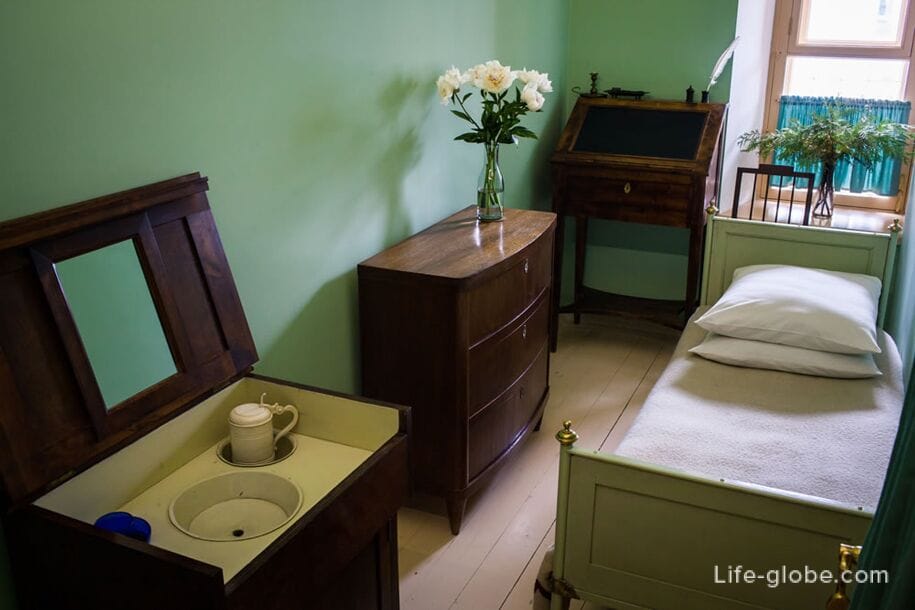
In the classroom there is a teacher's chair, a blackboard, and on the wall hangs the "General Map of the Russian Empire with the division into newly established provinces and counties" of 1785.
The semicircular desks are arranged in an amphitheater. Lyceum students took places depending on their success in a particular subject. The first ones were occupied by the best students. The latter - who had no knowledge of the subject. In Russian literature classes, Pushkin sat in the front; probably among the last, in mathematics.

The gallery, connecting the Lyceum wing with the Catherine Palace, housed a library.
Today there are more than 700 books with ex-libris and the Lyceum seal in six mahogany cabinets. Busts of ancient philosophers are placed on the pedestals: the first is Socrates, in the center is Sophocles, then Homer.
Next to the library was a small library.The newspaper room. On the right side of the wall is a map of the European part of Russia. In the center of the room, on a round table, there are issues of the newspaper "Northern Mail" with reports on the military operations from July to October 1812.
The entrance hall and the Long Room were intended for extracurricular activities. The lyceum students placed their poems, epigrams, and drawings in handwritten journals. In the Long Room there are training fencing accessories of Pushkin's time - rapiers and masks.
The former Physics Room, which was one of the best in its time, features tools and mechanisms from the late 18th and early 18th centuries. In the showcase is a collection of minerals, consisting of forty items including sea shells and fossils. In the center of the room on the table are the characteristics of the pupils and the report card of 1816. The rating system was as follows: one meant "excellent", two - "very good", three - "good", four - "mediocre", zero - "bad".
In the drawing class, copies of drawings of lyceum students of the first edition are presented: "The Head of the Biblical Elder" by Ivan Malinovsky, "The Bird" by Konstantin Danzas, "The Flower" by Pavel Myasoedov," The Lion "by Alexander Bakunin and" The Head of a Warrior " by Sergei Lomonosov.
In the singing class on the ancient piano, decorated with exquisite carvings with the image of the lyre, there is a "Farewell Song of the pupils of the Imperial Lyceum in Tsarskoye Selo". The words of Anton Delvig. Music by Wilhelm Tepper, who from 1816 served as a singing teacher at the lyceum.
In the apartment of the art teacher and tutor Sergei Gavrilovich Chirikov, the only surviving portrait of Pushkin, a lyceum student, is displayed on an easel. Presumably, the author of the portrait is S.G. Chirikov.
On the 2nd floor of the lyceum building there is a permanent exhibition "We live in the memory of the Lyceum", which represents the 200-year history of this wonderful educational institution and tells about the fate of outstanding graduates of the Lyceum in different years.
Adjacent to the building of the memorial lyceum-museum is the Lyceum Garden, which houses a bronze monument to A.S. Pushkin, a lyceum student, designed by the sculptor R. R. Bach and opened in 1900. Read more about the monument to Pushkin...
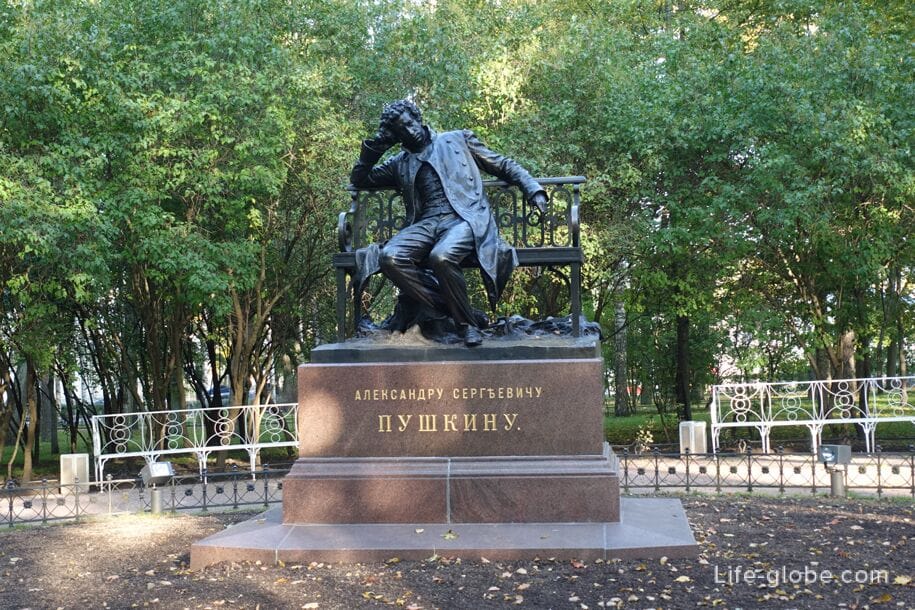
Address of the memorial museum-Lyceum: 196600, Pushkin city, Sadovaya street, house 2.
The Memorial Museum-Lyceum is part of the museum complex "All-Russian Pushkin Museum", which is the oldest Pushkin Museum in Russia.
Today, the museum complex, in addition to the lyceum museum, includes four more museums:
- The Memorial museum is the dacha of A.S. Pushkin, which was opened in 1958 in the city of Pushkin in a one-story wooden building that has largely preserved its original architectural appearance. Learn more about the dacha museum with photos...
- museum-apartment of A.S. Pushkin on the Moika with a literary and monographic exhibition " A. S. Pushkin. Life and creativity". Learn more about the museum and the exhibition…
- memorial museum-apartment of Nikolai Alexandrovich Nekrasov, located in the house where Nekrasov lived from 1857 until his death in 1877;
- the museum-estate of Gavriil Romanovich Derzhavin, which is a unique memorial object, recreated in 2003-2011. More about the estate museum with photos...
For more information about the Memorial Museum-Lyceum and other museums of the museum complex, including opening hours, ticket prices, visiting conditions, etc., please check the official website.
Website of the museum complex "All-Russian Pushkin Museum": museumpushkin.
You can visit Tsarskoye Selo with one of the excursions
In Pushkin, you can stay
The 5-star Pevcheskaya Tower Hotel features restaurants, a bar, a rooftop observation deck, free Wi-Fi and parking.
Breakfast is included in the room rate. Link to the hotel
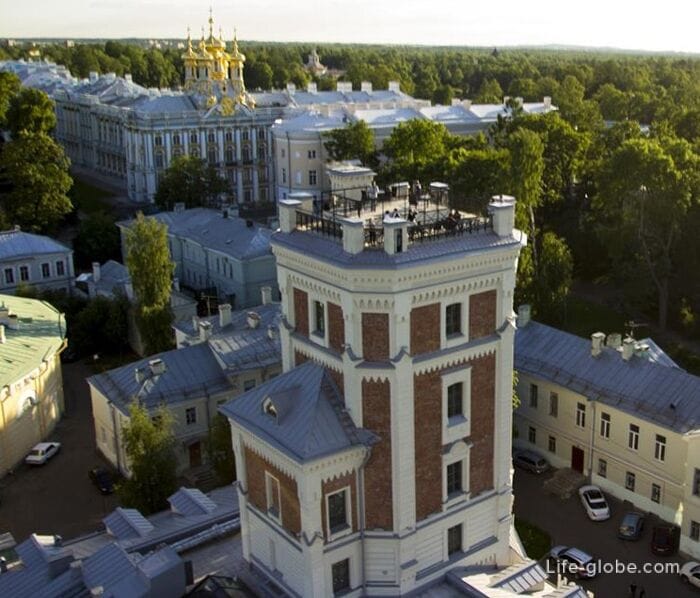
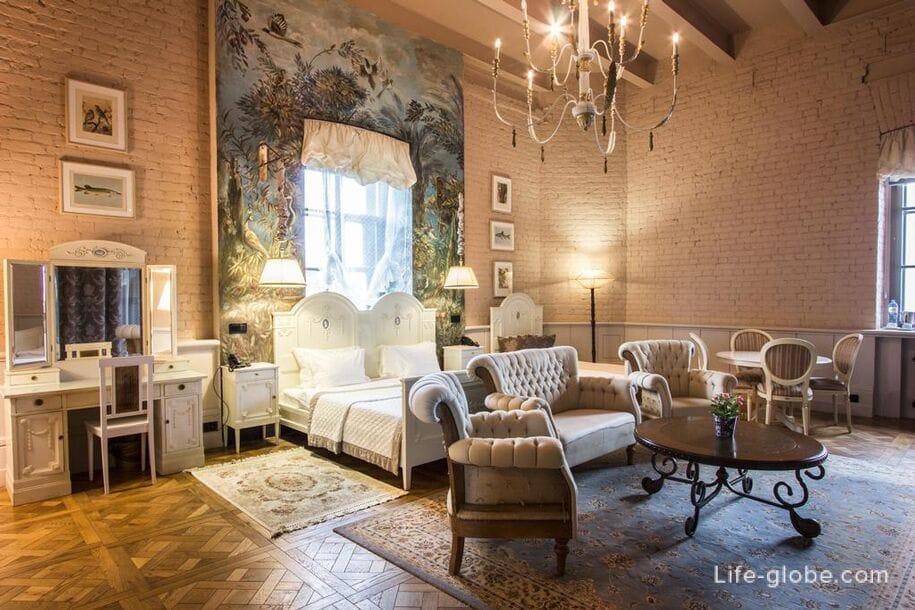
The 5-star luxury spa hotel "Tsar Palace Luxury Hotel & SPA"is located in a historic building.
At the hotel: spa center with swimming pool, hammam, salt sauna, snow fountain, steam baths and gym; free Wi-Fi, 24-hour front desk, 2 restaurants, lobby bar, private parking and meeting and conference rooms.
The rooms are equipped with climate control, a minibar, a safe and a private bathroom.
A buffet breakfast is included in the room rate. Link to the hotel

3-star hotel Ekaterina, located on the territory of the Catherine Palace and Park Ensemble.
At the hotel: 24-hour front desk, cafe, free Wi-Fi and parking.
Each room here will provide you with air conditioning, a TV, a work desk and free toiletries.
Breakfast is included in the room rate. Link to the hotel
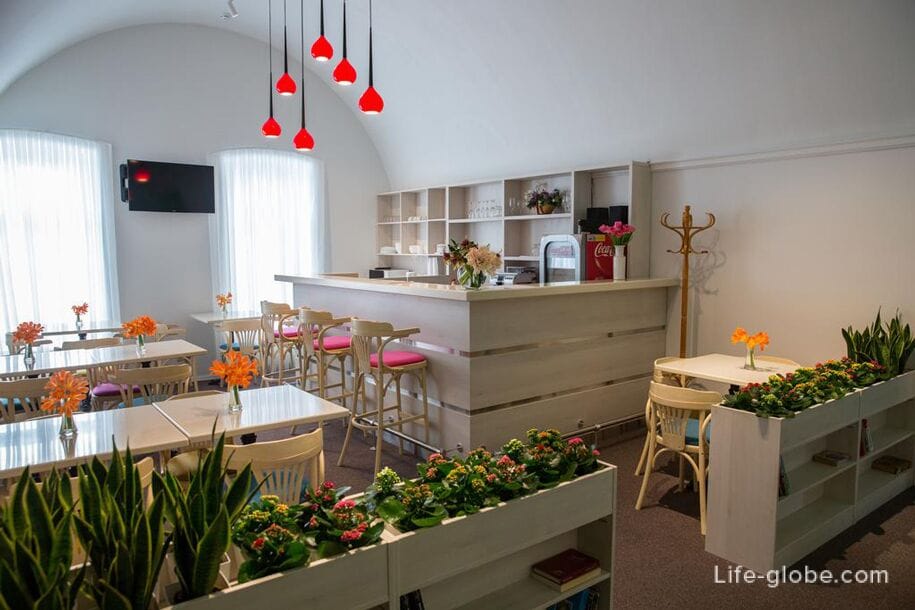
All accommodation facilities in St. Petersburg, including in the city center and in Pushkin, can be viewed and booked here